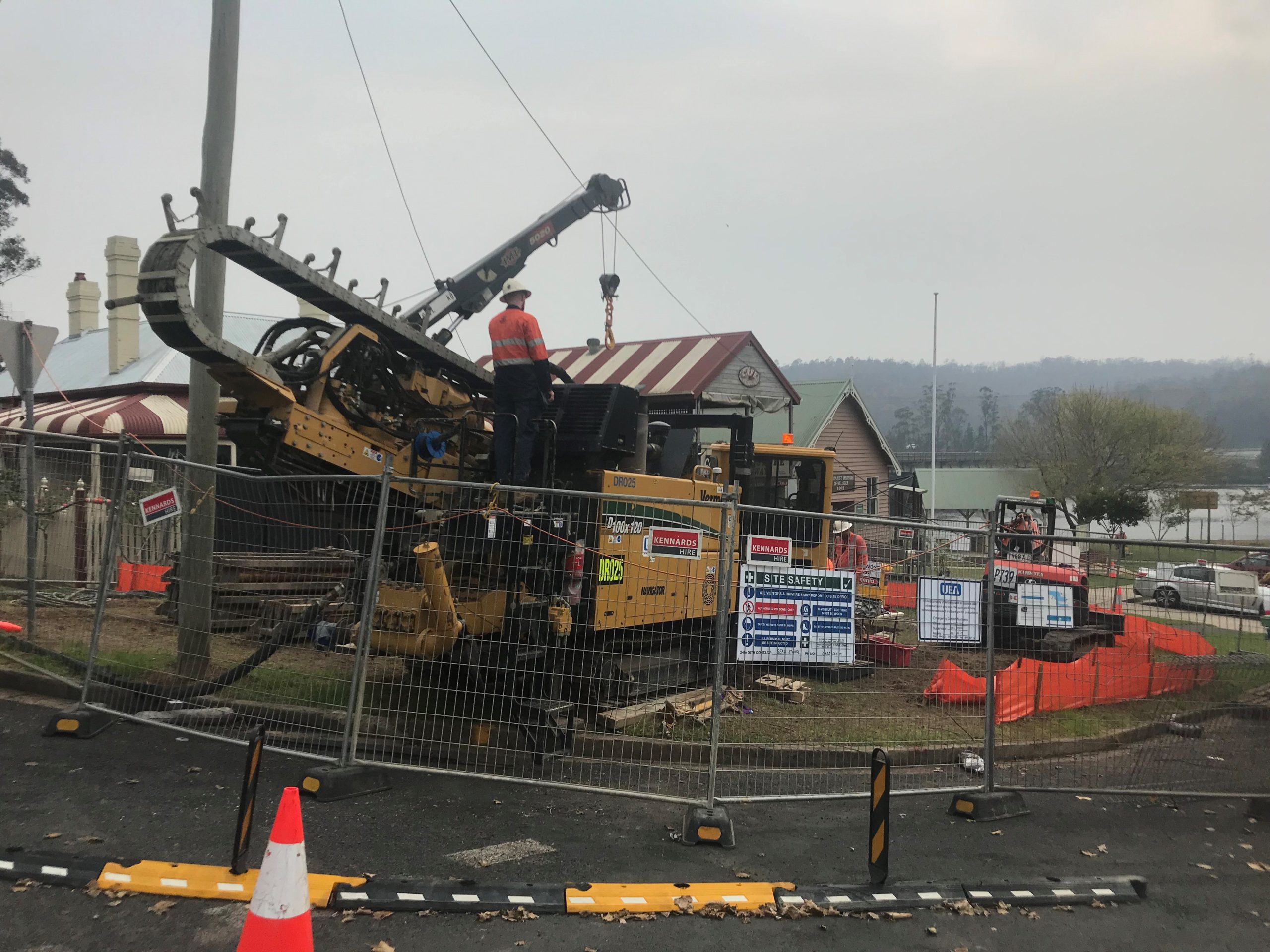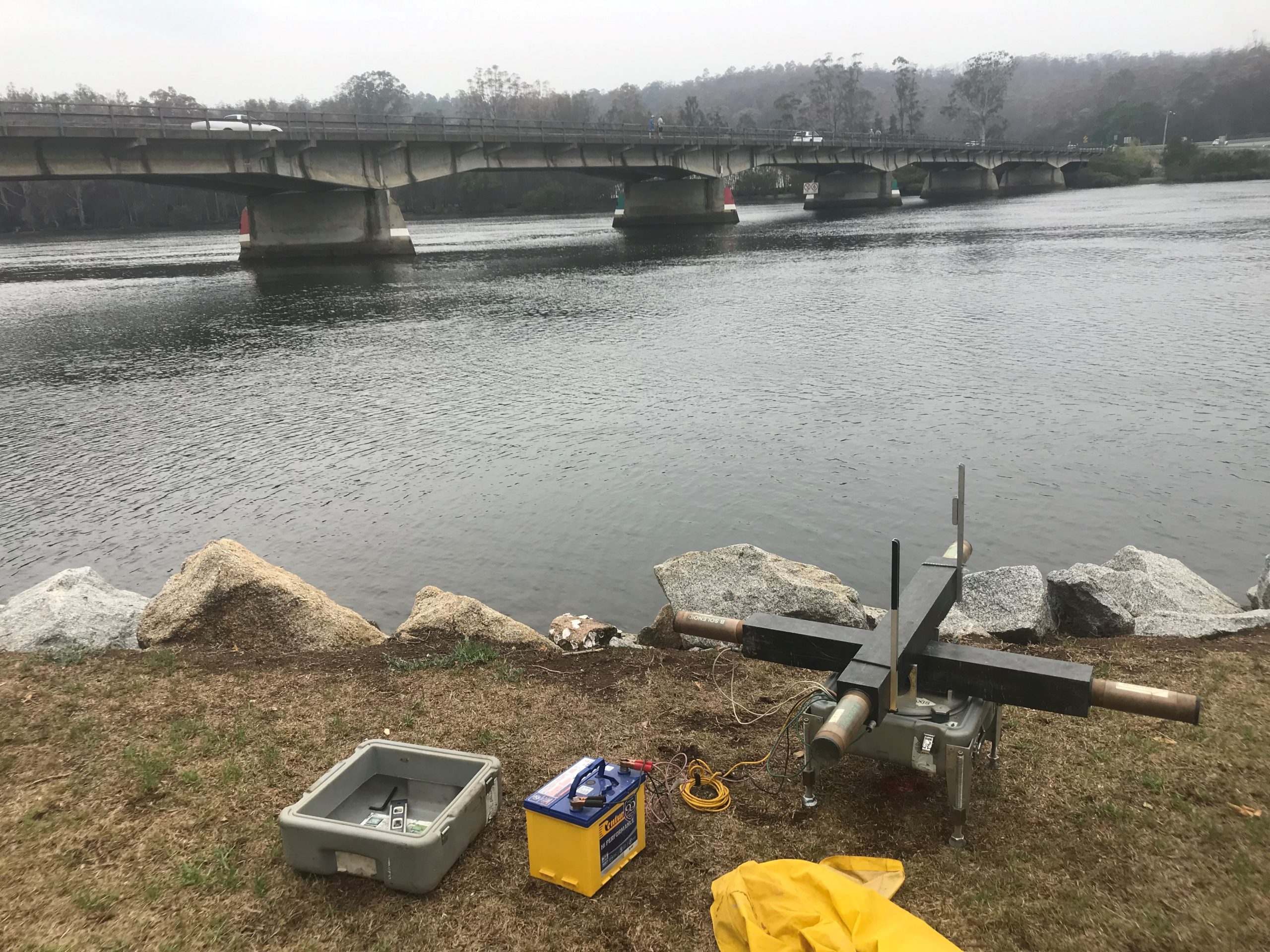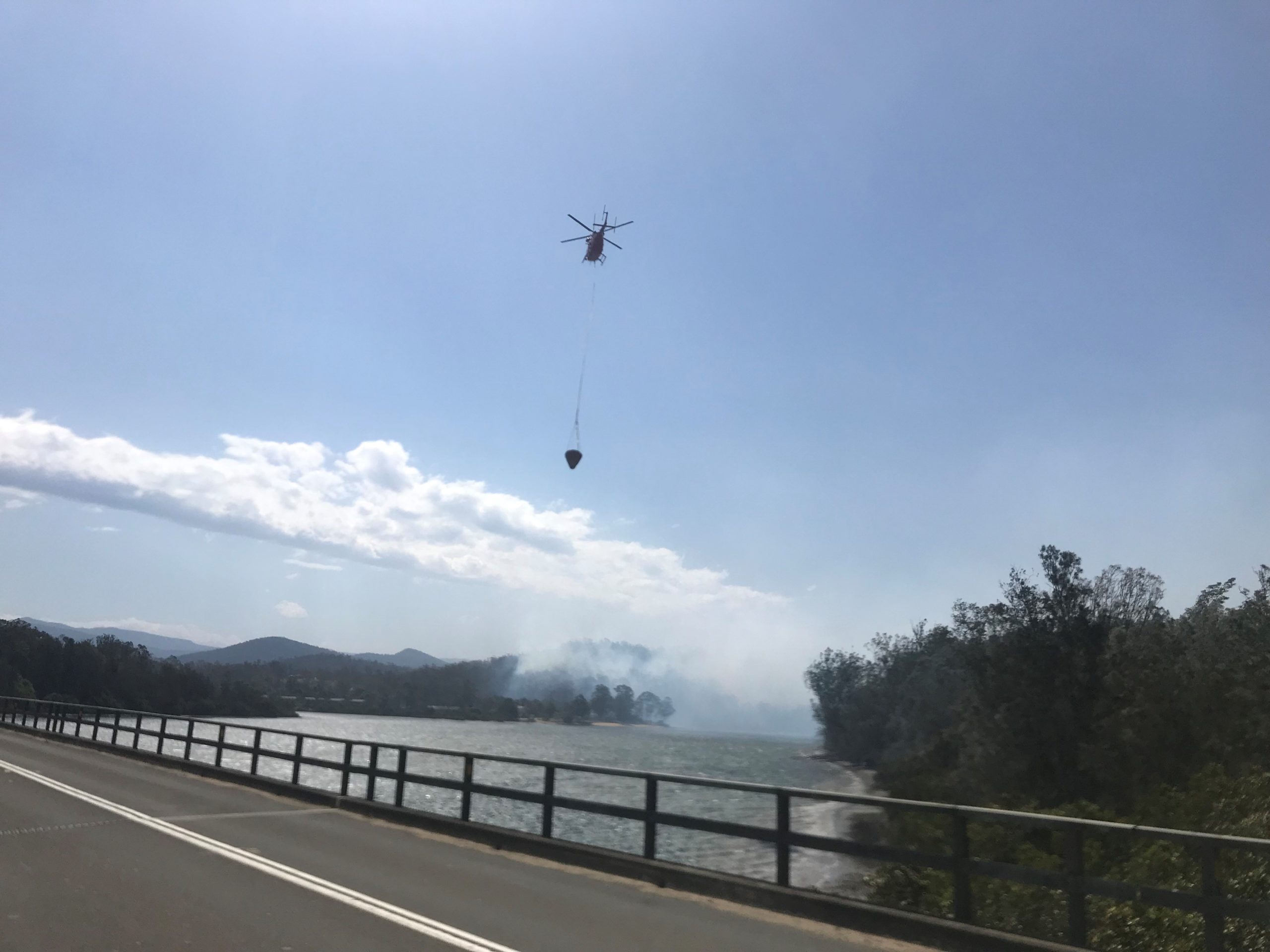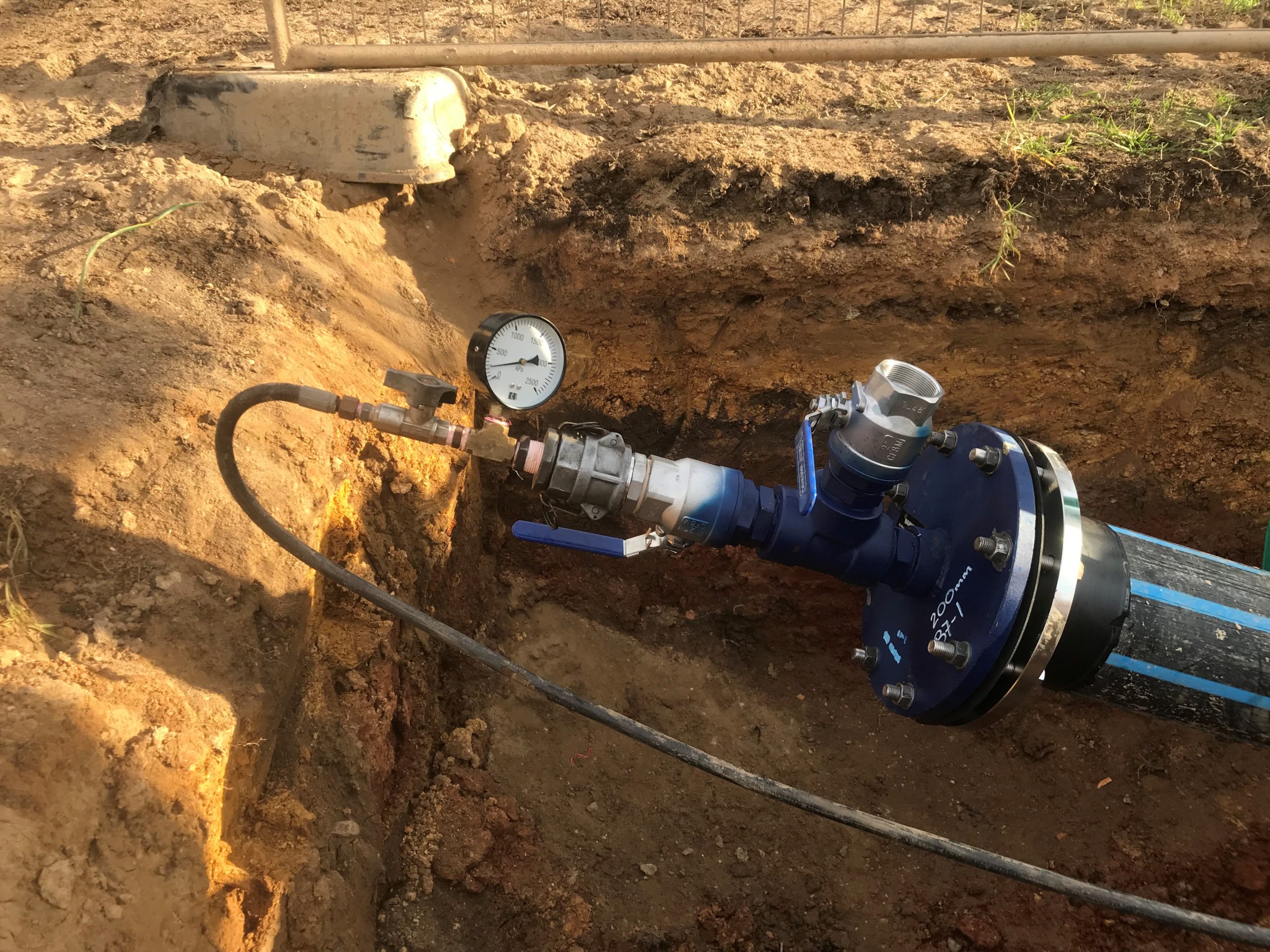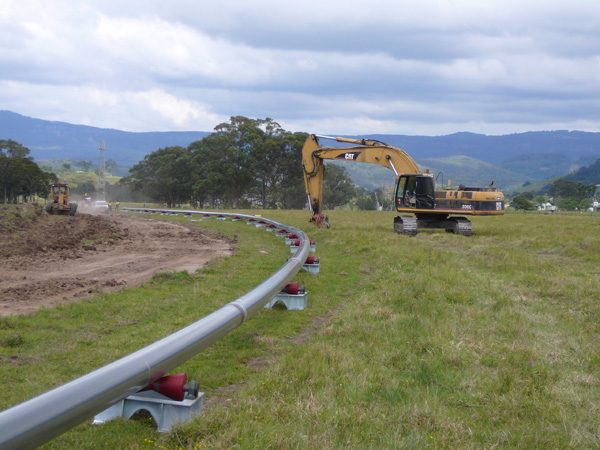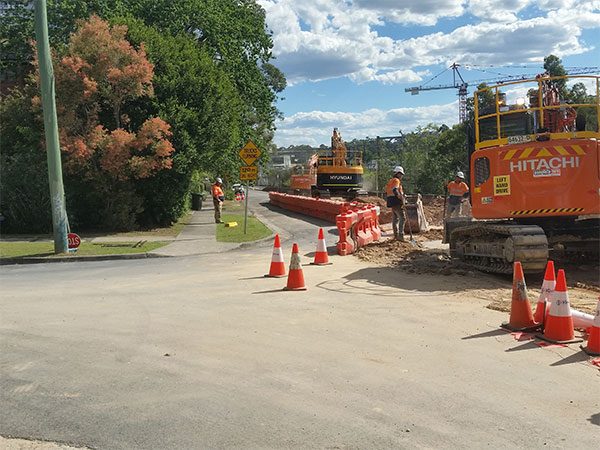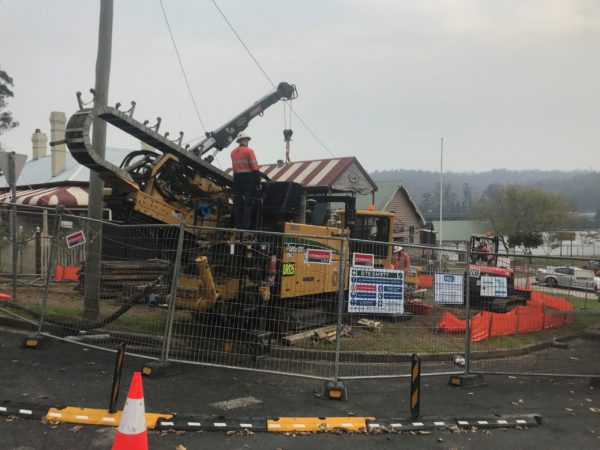Scope of Works
UEA worked with the client to create practical and feasible bore designs, using both our in-house HDD expertise and local experience of previously completed underbores across the Clyde River downstream in Batemans Bay. Our previous experience working in sensitive marine environments overseen by Australian Marine Parks streamlined the design and approval processes for the client. The use of HDD techniques ensured the least amount of impact and disturbance to both the marine environment and the local community as well. Final designs set the two bores to approximately 320 metres in length and to a depth of 18 metres.
As the principal contractor, UEA provided an all-inclusive turnkey package to the client, mobilising one of our D100x120 drill rigs and organising all designs, permits, pipe, pipe welding, testing, excavations, compound establishment, restoration, waste disposal, marine park monitoring, traffic control, grouting, survey and WAE drawings. UEA worked constantly with the client throughout the project to optimise the safety, costs and progress of the works, and hence was awarded a further two river crossing underbores (water main and sewer main) and four land-based communication bores. Due to the sensitivity of the marine parks environment, the sewer main consisted of 280mm pressure rated sleeve pipe with a 125mm pressure tested carrier pipe inserted into the sleeve pipe which would contain any sewage lost in the event of a failure of the 125mm pipe. With the township of Nelligen currently running off rainwater and septic tank systems, these additional underbores were installed as part of the planned expansion of the water and sewer mains networks.
Furthermore, in an effort to assist the client and Eurobodella Shire Council, UEA also completed various civil works as part of the project, including the construction of a leak detection pit, concrete thrust blocks and the in-trench installation of 48 metres of 125mm HDPE pipe for the sewer pipeline. The water pipeline included the construction of a valve in pit, concrete thrust blocks and the in-trench installation of 48 metres of 200mm HDPE pipe. Additional testing of the ground for bearing capacity was also undertaken to ensure that the proposed alignment was suitable for the works in order to ensure compliance with the design.
BUSHFIRES
The 2019-2020 Australian bushfires were some of the worst bushfires experienced in NSW and surrounding states, with an estimated 3,000 homes destroyed and 46 million acres of land burnt. The NSW South Coast was particularly impacted with several large fires burning in the area, including the Clyde Mountain and Currowan fires, which heavily impacted UEA’s work in Nelligen with fires burning not 20 metres away from the receival compound and pipe storage area.
These fires presented unforeseen challenges as UEA continued to work on the project whilst still safe under the advice of the local authorities. Initially, UEA reduced its presence onsite to a ‘skeleton’ crew and removed all non-essential plant and equipment from site, making any potential evacuation activities as streamlined as possible. The site was set up so that if fire did reach, no additional environmental impacts would occur due to damage caused to UEA property. Drill mud levels onsite were kept to a minimum, ensuring all environmental controls were well maintained and clean, keeping all chemicals bunded and away from environmentally sensitive areas and keeping all spill kits fully stocked. Air quality was continuously monitored as smoke levels reached hazardous levels.
As the bushfires continued to burn, UEA was cut off from supply routes as both the Princes Highway and Hume Highway were closed. Fortunately, during these times, UEA had sufficient resources onsite to continue working until these supply lines were re-opened as fires were controlled. The worst of the fires came during the Christmas shutdown period as fires in the Nelligen region raged out of control, destroying several houses in the Nelligen township and coming within close vicinity of the site compound.
Challenges
- The threat of incoming bushfire required the ongoing risk assessment to ensure plant and stock levels were kept at a minimum.
- Regular site evacuations due to bushfire danger halted drilling progress on a number of occasions and the required maintenance of the program.
- Increasing fire danger and subsequent evacuations in the Batemans Bay region reduced available accommodation of UEA’s crew, potentially making UEA’s onsite presence difficult.
- Closing of both Princes Highway and Hume Highway prevented the site resupply.
- As Nelligen does not have mains water, all water required for the works had to be carted to site and stored in onsite storage tanks.
- Working in close proximity to several heritage listed buildings and landmarks requiring additional protection strategies and specialised Construction Environmental Management Plans (CEMP) and Environmental Work Method Statements (EWMS). Additional mitigation measures included the use of noise blankets and vibration monitoring to minimise any impact from the project.
- Working in the vicinity to Marine Parks protected areas requiring permits, specialised protection and response strategies and alternate drill mud programs. The risk of flooding was also present on the project. This required a separate emergency evacuation plan that needed to be put into action a number of times, including additional environmental controls, bunded storage tanks and the relocation of plant and equipment to higher ground.
- Working in close quarters to residential buildings and narrow laneways whilst maintaining unrestricted access for locals. A comprehensive traffic management plan was developed for the project to minimise the impact of the project to the local community.
- The underbores were designed to take advantage of the ground strata evident in the geotechnical investigations completed prior to the commencement of works onsite. This allowed our crews to select the correct tooling for the predicted ground conditions of OTR, sand, siltstone with traces of quartz.
- Tracking the underbores were quite difficult, due to a number of site limitations. Therefore, our crews had to utilise a combination of walkover tracking and wireline tracking. This increased the accuracy of the tracking ensuring that the underbores were constructed within the proposed easements provided.
- Coronavirus pandemic caused delays to materials supply chain with additional measures implemented to protect the health and safety of the crew and the local community. By working with local suppliers and contractors, UEA was able to support local businesses while ensuring that the project was completed during these difficult times.
Completion
Through the combination of advanced equipment, know-how, experienced drill crews and local knowledge from previous projects, UEA completed the underbores ahead of schedule and within budget.
UEA was able to complete the installation of:
- 320 metres of 2x180mm electrical conduits – River Crossing
- 320 metres of 1x180mm communications conduits – River Crossing
- 320 metres of 1x200mm water pipe including hydrostatic testing by a NATA accredited crew – River Crossing
- 320 metres of 1x280mm sewer encasing pipe including vacuum testing by a NATA accredited crew – River Crossing
- 320 metres of 1x125mm sewer carrier pipe including hydrostatic testing by a NATA accredited crew – River Crossing
- 400 metres of 1x110mm communications conduits – Land based
- A leak detection pit, concrete thrust blocks and the in-trench installation of 48 metres of 125mm HDPE pipe
- A valve in pit, concrete thrust blocks and the in-trench installation of 48 metres of 200mm HDPE pipe
Our team appreciates the great work from the NSW Rural Fire Service for ensuring the safety of UEA and its contractors and acknowledge the sacrifice made by the south coast communities during the bushfire season.

